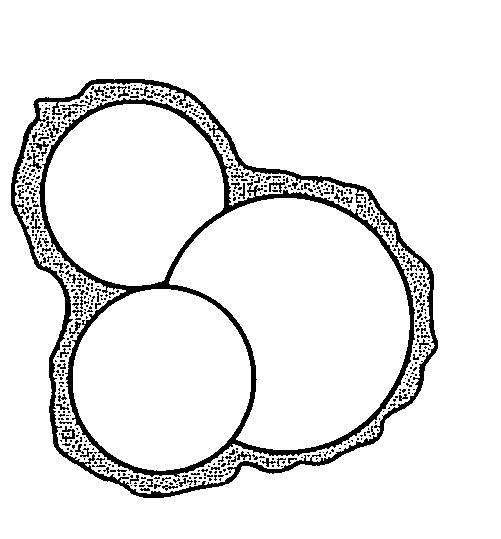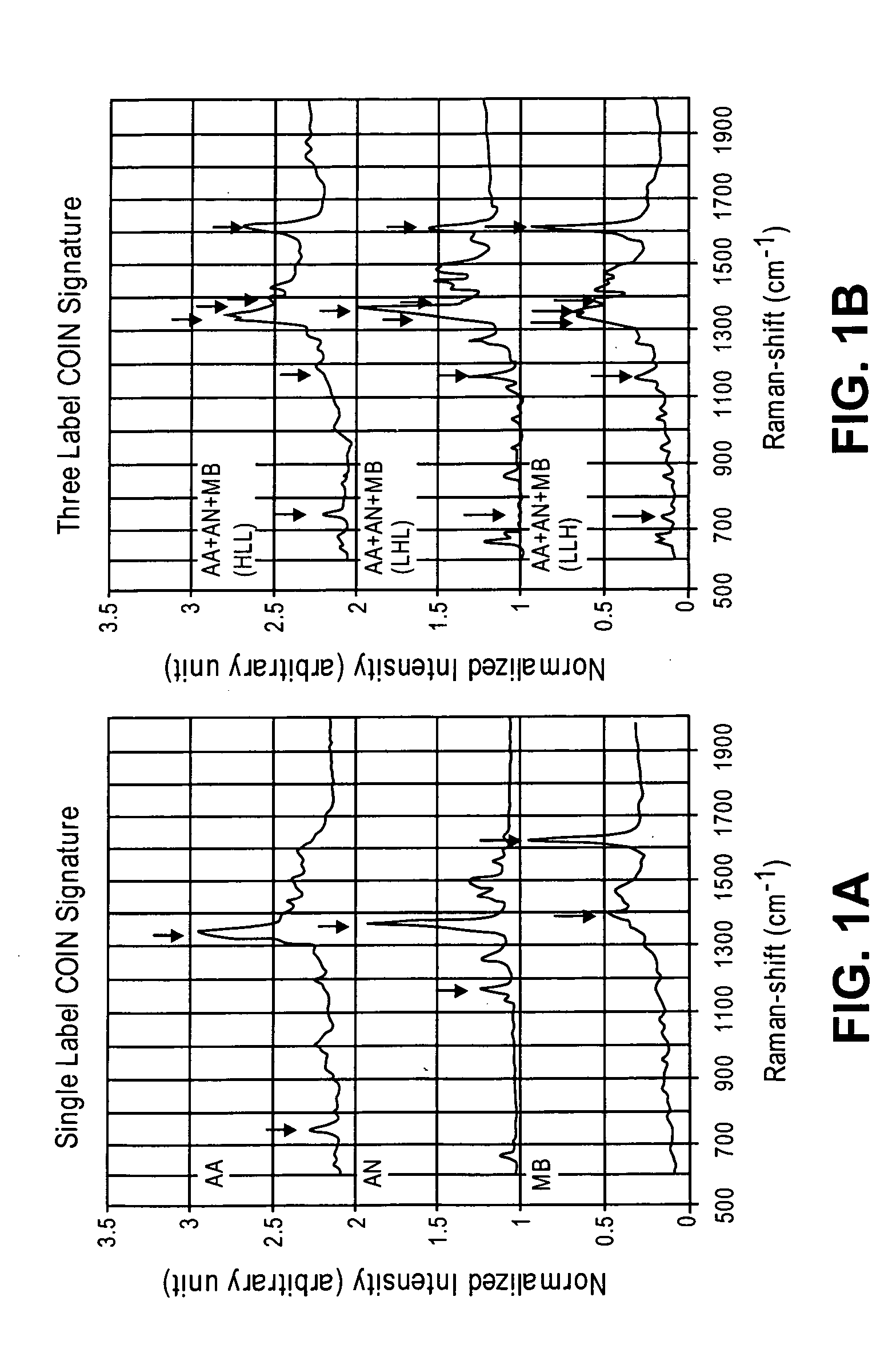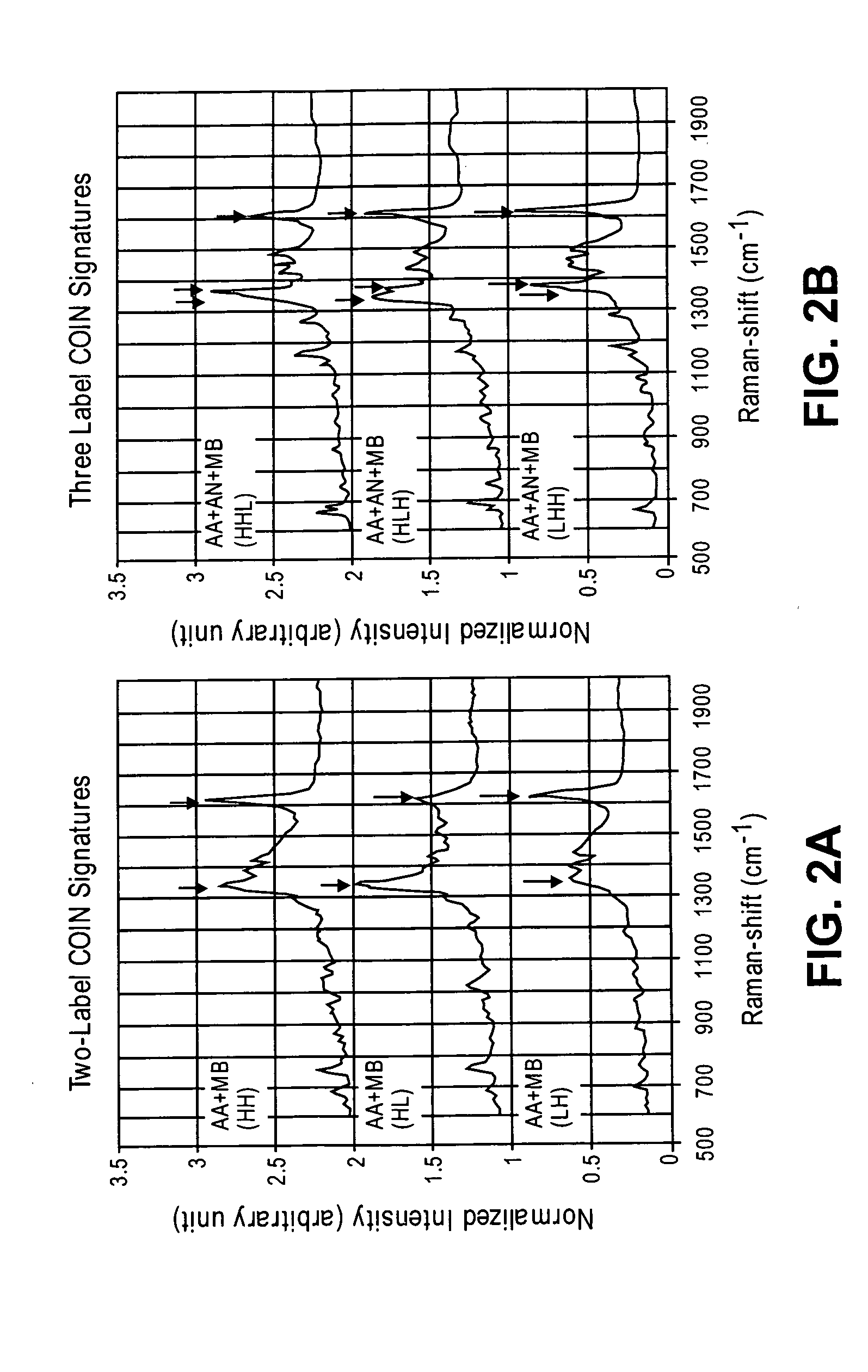External modification of composite organic inorganic nanoclusters
- Summary
- Abstract
- Description
- Claims
- Application Information
AI Technical Summary
Problems solved by technology
Method used
Image
Examples
example 1
Synthesis Considerations
[0077] Chemical reagents: Biological reagents including anti-IL-2 and anti-IL-8 antibodies were purchased from BD Biosciences Inc. The capture antibodies were monoclonal antibodies generated from mouse. Detection antibodies were polyclonal antibodies generated from mouse and conjugated with biotin. Aqueous salt solutions and buffers were purchased from Ambion, Inc. (Austin, Tex., USA), including 5 M NaCl, 10×PBS (1×PBS 137 mM NaCl, 2.7 mM KCl, 8 mM Na2HPO4, and 2 mM KH2PO4, pH 7.4). Unless otherwise indicated, all other chemicals were purchased, at highest available quality, from Sigma Aldrich Chemical Co. (St. Louis, Mo., USA). Deionized water used for experiments had a resistance of 18.2×106 Ohms-cm and was obtained with a water purification unit (Nanopure Infinity, Barnstad, USA).
[0078] Silver seed particle synthesis: Stock solutions (0.500 M) of silver nitrate (AgNO3) and sodium citrate (Na3Citrate) were filtered twice through 0.2 micron polyamide memb...
example 2
Synthesis of COINs Coated with BSA
[0092] Coating Particles with BSA: COIN particles were coated with an adsorption layer of BSA by adding 0.2% BSA to the COIN synthesis solution when the desired COIN size was reached. The addition of BSA inhibited further aggregation.
[0093] Crosslinking the BSA Coating: The BSA adsorption layer was crosslinked with glutaraldehyde followed by reduction with NaBH4. Crosslinking was accomplished by transferring 12 mL of BSA coated COINs (having a total silver concentration of about 1.5 mM) into a 15 mL centrifuge tube and adding 0.36 g of 70% glutaraldehyde and 213 μL of 1 mM sodium citrate. The solution was mixed well and allowed to sit at room temperature for about 10 min. before it was placed in a refrigerator at 4° C. The solution remained at 4° C. for at least 4 hours and then 275 μL of freshly prepared NaBH4 (1 M) was added. The solution was mixed and left at room temperature for 30 min. The solution was then centrifuged at 5000 rpm for 60 min...
example 3
Synthesis of Silver and Gold Particles Coated with Silica
[0103] Silver COINs are coated with silica by adding 100 μL TEOS to a stirred solution of 75 mL 100% ethanol and 20 mL of a dilute COIN suspension created by adding about 1 to about 10 mL of a 1 mM COIN solution to deionized water. Then, 5 mL of a 28% NH3 solution is added and the solution is maintained at room temperature with gentle stirring for 19 hours. The final molar composition of the coating solution is 4.6 mM TEOS and 0.82 M NH3. At the end of 19 hours, the solution is diluted 4× with deionized water and centrifuged at 5000 rpm for 15 min. to remove the organic solvent. The suspending solution is replaced with 1 mM sodium citrate.
[0104]FIG. 11A provides TEM images of silica-coated silver seed particles that were according to the preceding procedure. The thickness of the resulting coating was about 50 nm. The thickness can be reduced by (a) adding more silver particles, (b) reducing the TEOS concentration, or (c) de...
PUM
| Property | Measurement | Unit |
|---|---|---|
| Diameter | aaaaa | aaaaa |
| Diameter | aaaaa | aaaaa |
| Diameter | aaaaa | aaaaa |
Abstract
Description
Claims
Application Information
 Login to View More
Login to View More - R&D
- Intellectual Property
- Life Sciences
- Materials
- Tech Scout
- Unparalleled Data Quality
- Higher Quality Content
- 60% Fewer Hallucinations
Browse by: Latest US Patents, China's latest patents, Technical Efficacy Thesaurus, Application Domain, Technology Topic, Popular Technical Reports.
© 2025 PatSnap. All rights reserved.Legal|Privacy policy|Modern Slavery Act Transparency Statement|Sitemap|About US| Contact US: help@patsnap.com



